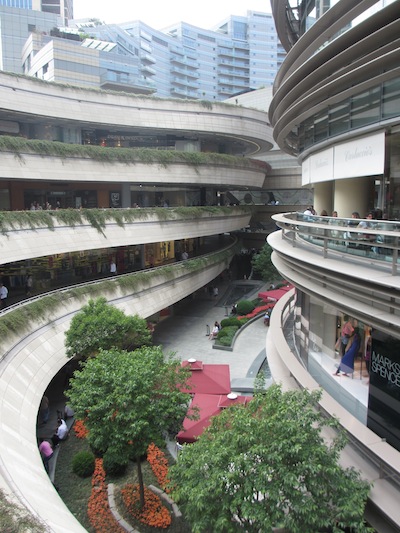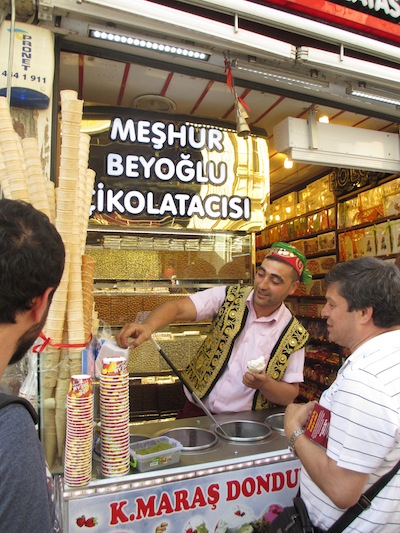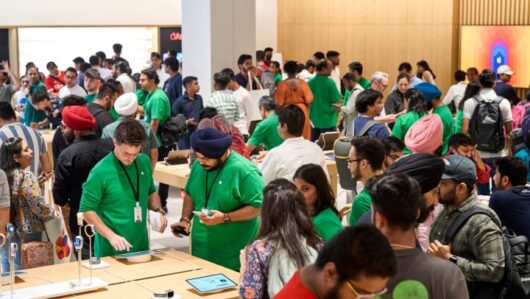 The past 10 years have treated Turkey well. The only nation in the world across two continents – Asia and Europe – has previously struggled to find its standing in the western world, however, while the rest of he world has felt the effects of the global financial crisis, Turkey has continued its steady upwards march.
The past 10 years have treated Turkey well. The only nation in the world across two continents – Asia and Europe – has previously struggled to find its standing in the western world, however, while the rest of he world has felt the effects of the global financial crisis, Turkey has continued its steady upwards march.
Boasting the second youngest population in Europe, in the capital city of Istanbul alone, around 60 per cent of its citizens are under 35, indicating the huge potential the market holds for the future.
However, as the 2013 Westfield World Retail Study Tour departed Istanbul after three days of exploring some of the city’s top retail offers, the country was thrown into turmoil with violent protests breaking out over, of all things, the building of a new shopping centre on a public park.
The Turkish still view shopping centres warily. There are 300 across the country, the majority having opened within the last 10 to 15 years. Shopping centres are still a relatively new game here. And now, a controversial one.
Although the protests initially began as a result of the approval of a new shopping centre, over the ensuing weeks, a heavy handed government met protesters head on with violence and a string of threats – which in turn further incensed protesters to the point of riots.
While the incident has impacted on Turkey’s economy and the way it is viewed by the rest of the world, the argument is no longer about the placement of a shopping centre, but instead about unhappiness with the AKP Party which forms the current government.

There are 318 shopping centres in Turkey, and 100 more are planned to open in the next five years.
According to Basak Vardar, a partner at Deloitte in Turkey, shopping centres are often viewed negatively as only 40 per cent of retail in the country is organised.
“There is sometimes negative publicity about shopping centres, especially regarding locations and how they jeopardise or cannibalise the smaller retailer,” Vardar says.
“There’s a boom of shopping mall activity in Turkey and location matters very much. It’s hard to find good locations.”
Despite some opposition, it appears unlikely that the march of organised retail will be stopped. Far from being stalled, retail is becoming increasingly regulated with shopping mall associations having formed in recent years to guide the growth.
“They are trying to keep track of figures and productivity and have started to share these,” Vardar told the Westfield World Retail Study Tour.
“Retail is one of the industries Turkish businessmen want to grow abroad. They have expansion strategies, and altogether they share their data,” she said.
In 2011 Turkey was the world’s second fastest growing economy behind China, but unlike China, in most cases, homegrown retail brands are favoured. Popular local brands include Mavi, Kotton, Tecknosa, YKM, Boyner, Beymen, Sarar, Vakko, Bim, Hotic, and LC Waikiki.
While 60 per cent of retail across the country may be unroganised and figures are unreported, this writer had some of the best retail experiences she has ever had in Turkey.
Selling here is more than a career, it is an art form. While in some places you may experience the frustration of a market featuring an over zealous style of selling, most of the selling I came across was focused on service and recommendation – something very much overlooked here in Australia.
Venture out of the main tourist areas in Istanbul, and retail comes alive. Stores situated in small streets, vibrant fruit markets with a personal, local feel, and carpet sellers by the dozen.
The difference is that as opposed to just trying to flog a product, store keepers make the effort to educate shoppers – explaining the region items derive from, how they are made, and best used.
Never did I feel harassed or pushed throughout a sale, and on more than one occasion, with no intention of purchasing, I found that simply through the knowledge and passion sales assistants imparted to me, I was inspired to buy.
The rate of credit card usage in Turkey is also on a serious upward trajectory with the volume of credit card transactions growing at an average of 12 per cent a year for the past five years.
Historically, food makes up half of the county’s retail spend, however, the non-food sector is catching up and is expected to exceed food retail by 2016.
Apparel is the most attractive sector for investment among the retail categories, with the apparel and footwear alone valued at $6 billion in 2012.
Food is predicted to grow by eight per cent over the next five years, while apparel is tipped to rise by 10 per cent in the same period.
E-commerce
Online retail in Turkey is mainly driven by its young population with an increasing discretionary spend.
Deal of the day sites and apparel shopping clubs are among the most popular in Turkey. E-commerce has grown by more than half, in the last eight years at 55 per cent.
The number of internet users has increased by more than 50 per cent in the last five years, with overall penetration sitting at 47 per cent. Despite this, a low percentage of internet users spend on the internet, implying huge potential for online retailing.
This story originally appeared in Inside Retail Magazine’s August/September 2013 edition as part of our exclusive coverage on the 2013 Westfield World Retail Study Tour.
Inside Retail Magazine’s December/January 2014 issue, featuring Inside Retail Magazine’s annual Shopping Centre Developments Guide 2014 is available now. For more information, click here.







